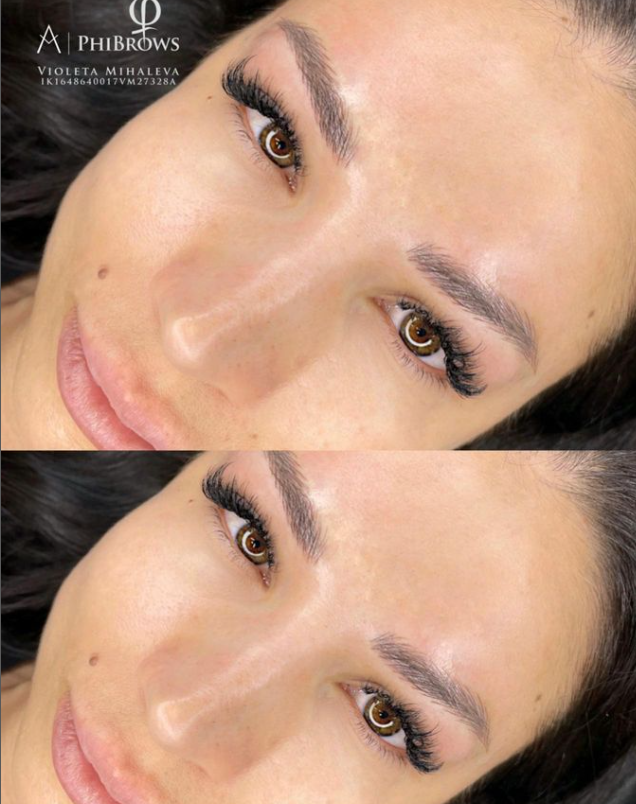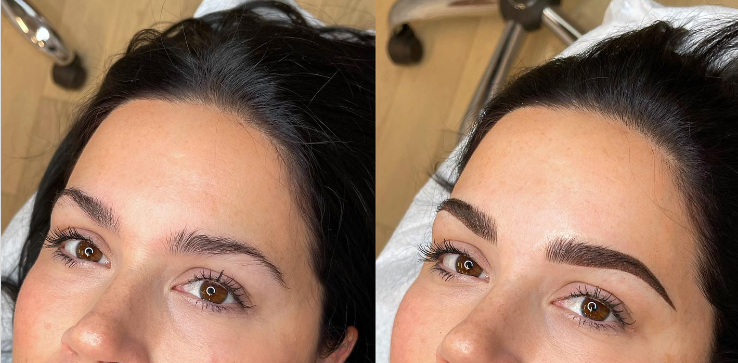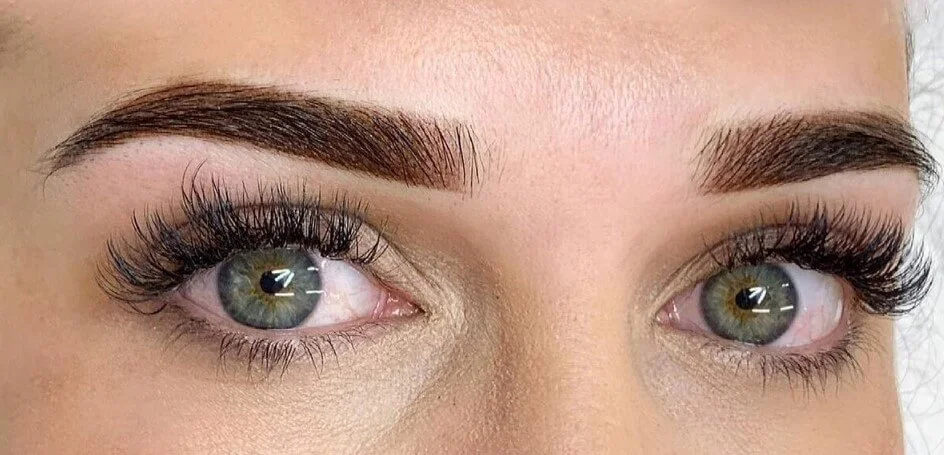Eyebrows are an essential part of the face and play a significant role in defining our overall appearance. Unfortunately, only some are blessed with naturally full and symmetrical brows. Luckily, various cosmetic procedures are now available to enhance the look of your brows. Two of the most popular techniques are combination brows and microblading. Both options effectively give you fuller, more defined brows, but which one is right for you? In this article, I will compare combination brows vs microblading, including their differences in terms of lasting power, touch-up requirements, cost, pain level, and more, to help you make an informed decision.
What Are Combination Brows?
Combination brows, also known as ombré or powder brows, are a semi-permanent makeup technique that combines a machine and hand tools to create a more natural and gradient look. This technique involves creating a softer, lighter shade at the front of the brow, gradually getting darker towards the tail. The result is a more natural-looking brow that mimics the appearance of a filled-in brow without harsh lines.
What Is Microblading?
Microblading is a semi-permanent makeup technique that uses a handheld microblade tool to create fine, hair-like strokes to mimic the appearance of natural brow hairs. Therefore, this technique is perfect for those who want to add more volume and definition to their brows. The results of microblading can last up to three years, making it a popular choice for those who want long-lasting results.

Combination Brows vs Microblading Last
Combination brows and microblading both have different lasting durations. Generally, combination brows last longer than microblading. Combination brows can last 18 to 24 months, while microblading lasts 12-18 months. However, the longevity of both techniques depends on several factors, such as skin type, skincare routine, and lifestyle habits.
Proper aftercare ensures that combination brows and microblading last as long as possible. With proper care and maintenance, you can expect to enjoy your combination brows or microblading for a reasonable amount of time before a touch-up is needed.
Combination Brows vs Microblading Touch-Up
Combination brows and microblading both require touch-ups to maintain their appearance over time. Microblading typically requires a touch-up after 6 to 8 weeks, while combination brows may need a touch-up after 4 to 6 weeks. The touch-up process involves adding pigment to the areas where it has faded or disappeared and can help ensure the brows look fresh and defined. The touch-up frequency will vary depending on skin type, aftercare, and individual preferences.
Generally, microblading touch-ups may be needed every 12 to 18 months, while combination brows may require touch-ups every 6 to 12 months. It’s essential to follow the aftercare instructions provided by your technician and schedule touch-up appointments as needed to maintain the desired look. Regular touch-ups can keep your brows looking their best and extend the lifespan of your microblading or combination brow procedure.
Combination Brows vs Microblading Cost
The cost of combination brows and microblading can vary depending on your location and the technician’s skill level. On average, combination brows can cost between $500-$800, while microblading costs $600 to $1200. It’s worth noting that while microblading is generally more expensive, it does last longer than combination brows, making it a more cost-effective option in the long run.

Combination Brows vs Microblading Pain
Pain level is one of the people’s most significant concerns when considering eyebrow tattooing. Both combination brows and microblading involve a needle, so some level of discomfort is to be expected. However, the amount of pain experienced can vary greatly depending on individual pain tolerance and the technique used by the artist.
In general, microblading is considered to be less painful than combination brows. It is because microblading involves using a single needle to create small, precise strokes, while combination brows apply using both a needle and a machine to create shading. The device used for combination brows can be louder and more uncomfortable than the single needle used for microblading.
That being said, it’s important to note that everyone experiences pain differently. Some people may find microblading more uncomfortable, while others may find combination brows less painful.
How Do I Choose Between Combination Brows vs Microblading?
Ultimately, the choice between microblading and combination brows comes down to personal preference and individual factors such as skin type, desired outcome, and budget. Here are some key points to consider when making your decision.
- Skin Type: Microblading may be better for dry or sensitive skin. While combination brows may be better for those with oily skin.
- Desired Outcome: If you’re looking for a more natural-looking brow with defined strokes, microblading may be the better option. Combination brows may be the way to go if you want a more filled-in and shaded look.
- Budget: Combination brows tend to be more expensive than microblading, so microblading may be the more affordable choice if cost is a factor.
- Touch-Ups: Microblading typically requires more frequent touch-ups than combination brows, so if you want to avoid committing to regular appointments, combination brows may be the better option.
- Pain Tolerance: As mentioned earlier, the pain level experienced can vary between the two techniques, so if the pain is a significant concern for you, it’s worth discussing it with your artist before deciding.

Combo Brows vs Microblading – Main Takeaways
In conclusion, choosing between combo brows and microblading depends on personal preference and individual needs. Combo brows provide a more natural and textured look, while microblading offers more precision and control over the brow shape. Both techniques have pros and cons regarding longevity, touch-ups, cost, and pain level.
Ultimately, it is recommended to do thorough research, read reviews, and consult with a trusted and experienced professional to determine which technique is best suited for you. With proper care and maintenance, both combo brows and microblading can provide beautiful and long-lasting results.
FAQs About Combination Brows vs Microblading
Here are some questions related to combination brows vs microblading. Must read the following.
1. Which One Is Better For Sparse Eyebrows?
Both combination brows and microblading can work well for sparse eyebrows. However, the best option may depend on the individual’s preference and the artist’s expertise. Combination brows use a combination of microblading and shading techniques to create a more natural look, while microblading involves hair-like strokes with a small blade. It’s essential to consult with a qualified artist to determine which option is best for your unique eyebrow needs.
2. Can I Still Tweeze Or Wax My Eyebrows After The Procedure?
It’s best to avoid tweezing or waxing the eyebrows after a combination brow or microblading procedure as it can interfere with the healing process and affect the outcome. Letting the new eyebrow shape settle for at least 4 to 6 weeks before making any changes is recommended. However, trimming the stray hairs that grow outside the tattooed area is acceptable. It’s always best to consult the technician before changing your eyebrows after the procedure.
3. Will The Pigment Fade Over Time?
Yes, the pigment will fade over time for combination brows and microblading. The pigment’s longevity depends on various factors, such as skin type, aftercare, and the amount of exposure to sunlight. Generally, microblading lasts 1 to 2 years, while combination brows can last up to 3 years. We recommend touch-up sessions to maintain the desired shape and color of the brows.
